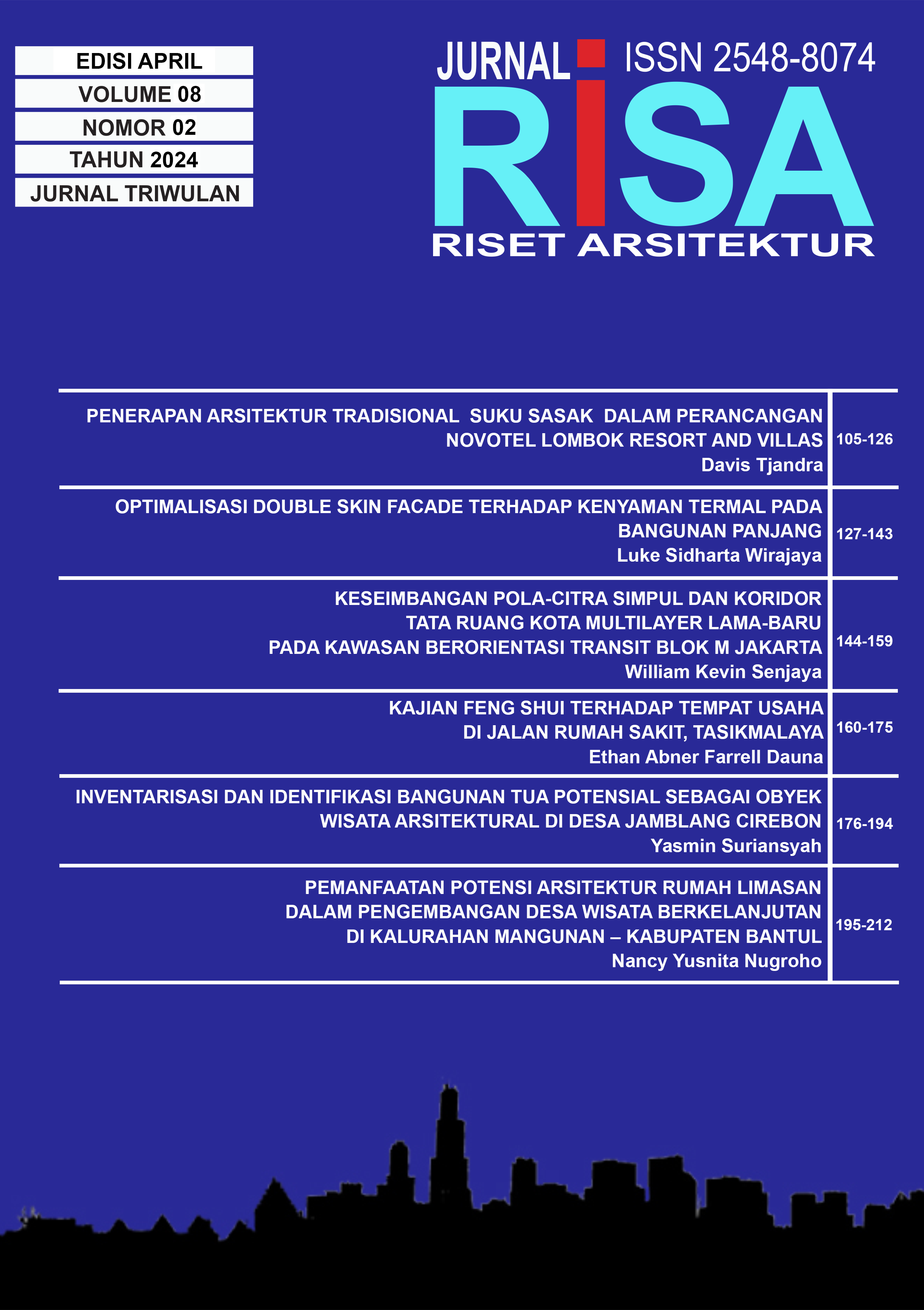DOUBLE SKIN FACADE OPTIMIZATION FOR THERMAL COMFORT IN LONG BUILDING
DOI:
https://doi.org/10.26593/risa.v8i02.7868.127-143Abstract
Abstract - The issue of limited urban land in Indonesia is increasing day by day, with the problem of high population growth and increasing housing needs, creating a lot of slum housing which does not pay attention to comfort and health. With this problem, the city also produces many smaller building widths and land compared to the previous one, especially in the city center and its surroundings. Nowadays buildings around urban areas in Jakarta are smaller but elongated on the sides , which uses a flat roof to add to the city view, with an elongated shape of the building that does not have openings on the right and left sides, this raises questions about the system and the building's performance on thermal comfort.
This study uses a software simulation method, where the 3d model is made on Autodesk Revit, while the simulation is carried out to analyze the model thermal comfort and wind speed, using Autodesk CFD software. For the assessment of wind speed ,it is verified with the Lippsmeier 20017 standard and the thermal comfort standard through the Indonesian thermal comfort standard in (SNI) 03-6572-2001 and the Regulation of the Minister of Health of the Republic of Indonesia NO. 1077/MENKES/PER/V/2011.
The results of this study are an optimization model and a simulation of the application of effective shading and stack effects in buildings, especially in the main room in the long building, in this study the object used is 3500mm house by Ago Architects on Jl.Haji Nawi, South Jakarta. The optimization simulation of the facade components and the stack effect in the building was carried out 4 times with the parameters of the shading angle (A and B) and the height of the stack effect (A and B), followed by concluding that from the 4 simulations the greatest effect for achieving thermal comfort is optimization of the stack effect which can reduce the comfort temperature by 1.56°C. The conclusion in this study is that optimization of the Stack effect can make the thermal comfort of the building better.
Keywords: Long building, thermal comfort, wind speed, DSF,Stack Effect , Autodesk CFD , Jakarta
Additional Files
Published
Issue
Section
License
Copyright (c) 2024 Luke Sidharta Wirajaya

This work is licensed under a Creative Commons Attribution-NonCommercial-ShareAlike 4.0 International License.












